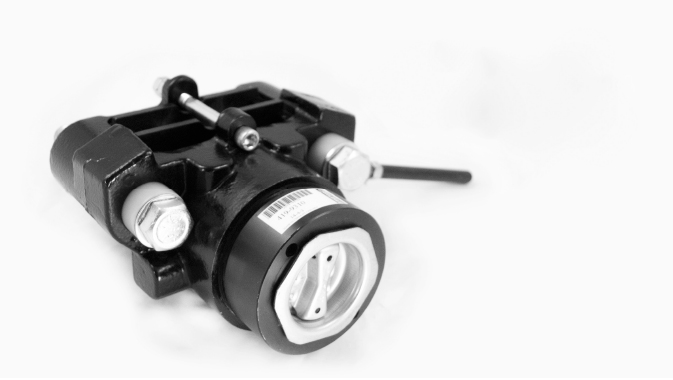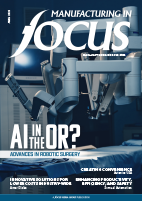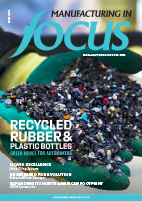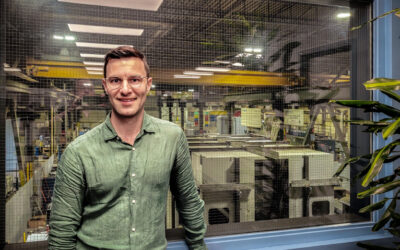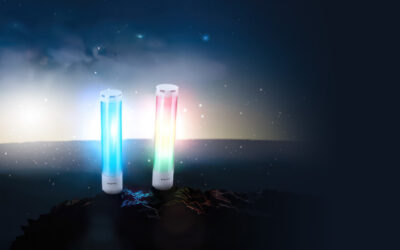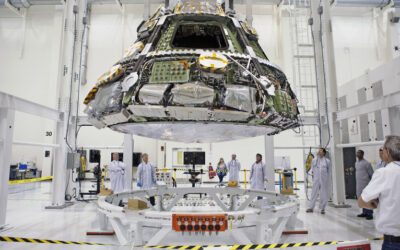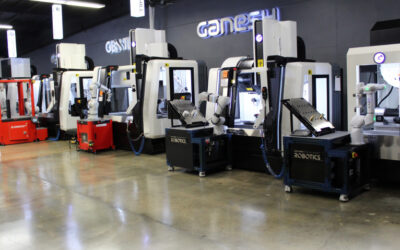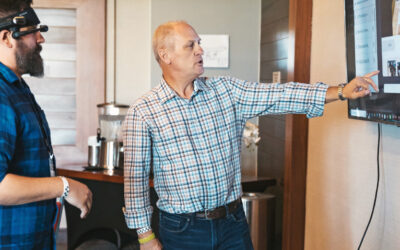Ted Messmer knows, more than most, the importance of having safe and reliable equipment when operating in severe conditions. He flew attack helicopter missions for the U.S. Army for seven years – two in Korea.
Now Messmer heads up Carlisle Brake & Friction, a leading global supplier of brake systems and friction components for off-road machinery and vehicles – including those same helicopters he piloted serving his country.
“It drives an even stronger connection and passion for what we do, because I did live in that environment where your systems are so critical and you’re putting them through some very extreme conditions,” Messmer says.
“I learned in my first week here that we actually provide systems for the helicopters I used to fly. So I pay extra attention to our military lines to make sure that my brothers and sisters-in-arms are safe.”
The Ohio-based company has a long track record of expertise for military vehicle requirements as a supplier for more than 70 years, and a full transmission systems provider “from the pedal to the wheel” for almost a century. In the 1920s, Henry Ford turned to the company to develop the transmission linings for the Ford Model T, the first car to be mass-produced on assembly lines instead of individual hand-crafting.
Other firsts include the 1935 invention of sintered metal brake discs for aircraft brake friction used for Goodyear aircraft brakes – since Goodyear had expanded its aircraft tire business to brake products. Carlisle also supplied the improved brake sintered metallic friction products for military tanks and ground transport vehicles in the Second World War. By the 1950s, the company was at the forefront of the expander tube brakes, originally designed for military aircraft, to outfit the first CAT mining trucks.
“Beyond the friction materials that deliver the right stopping power and durability, it’s putting in place what’s needed to control that brake for that specific platform,” Messmer says of the company’s reputation for high-performance wet and dry brake systems.
“Throughout our history, we’ve been one of the key leaders to help transition technologies from the first mechanical style brakes, to hydraulically driven brakes, to the electrical brake.”
Now Carlisle Brake & Friction custom-designs those critical systems for a wide range of markets and applications, from construction wheel-loaders and mining trucks to aircraft and farm tractors.
“Almost all of our customers need high performance,” Messmer says. His background as a systems engineer helps him understand manufacturing demands from prototyping right through to field testing and production. “If you think about the mining environment, for example, it puts these machines at the extremes and you just can’t have failure. It’s not an option.”
Four years in as President, Messmer has developed a clear strategy to empower the company’s 1,600 employees “to take on some really big projects,” he says, and benefit customers around the world. Carlisle invests about four percent of sales into research and development. This, along with manufacturing improvements like 3D printed modelling and assembly automation, have boosted innovation, quality, and cost and delivery efficiencies. In a competitive market, Carlisle is making gains and gaining recognition.
In 2018, its Twin QuickFill Booster netted a technical innovation award from EIMA International, an agricultural mechanization trade fair. The component is a master cylinder that uses Carlisle’s patented QuickFill technology to deliver more oil volume to a vehicle’s brake system than traditional boosted master cylinders. Now the technology can be extended to larger and heavier vehicle classes for the company’s OEM clients.
Carlisle product experts and engineers will also be onsite at the coming CONEXPO-CON/AGG IFPE trade show this March, where the fluid power, power transmission and motion control industries demo their latest innovations.
The team will introduce the “next generation of friction material” for wet brake and transmission industrial applications. Carlisle’s unique, full-system approach is engineered for improved energy capacity and management to meet the strenuous demands of construction and mining equipment.
“We’re providing the ultimate combination of energy capacity, stability and predictable friction performance for first stopping the vehicle,” Messmer says. “Normally, if you use the same traditional technology, every time you increase horsepower, you’re going to have to build up a larger transmission with more friction discs.”
The beauty is that this performance enhancement doesn’t come with a larger, heavier transmission. In fact, just the opposite, Carlisle technology actually reduces the size and the cost of those systems, with an added bonus of greener operations.
When you talk to Messmer about what the company does best, he’ll tell you that the top-level friction materials and wet and dry brake technologies Carlisle is known for all come down to talented people working together with open lines of communications.
The know-how from the team of engineers and frontline employees on the plant floors in North America, Asia and Europe is deep, and the commitment to providing clients with smart solutions and a high level of support from a local resource is a key advantage.
Today’s clients rely much more collaboration, he says. “What we bring is expertise. We have an extensive amount of material science capability for designing friction. Proprietary friction really has a broad base of applicators.”
In a lot of cases, you can’t use the same type of brake from platform to platform. So you really do have to customize your systems. It’s this integration of product platforms that allows the company to scale technology improvements to increase overall system effectiveness.
Case in point is electrical braking, the current technology in development for automotive, aerospace and industrial vehicles with autonomous features like remote braking. Going electric brings weight savings and speed by getting rid of hydraulic lines and mechanical devices.
“The path to electric brakes is going to be different. So if you think about these construction vehicles, they have all these different functions going on, like lifting, performing different activities. They won’t be able to do that with total electric power anytime soon. The path currently is a kind of an electro-hydraulic interplay.”
Carlisle is a forward-thinking company and a true leader that is transitioning to new technologies. What’s on the horizon will be ground-breaking for manufacturing.
As Messmer puts it: “We’ve created a transformation for our commercial and our growth strategy. We’re right on the cusp of designing that future brake system for several customer partners that are going through that transition to autonomous.”

